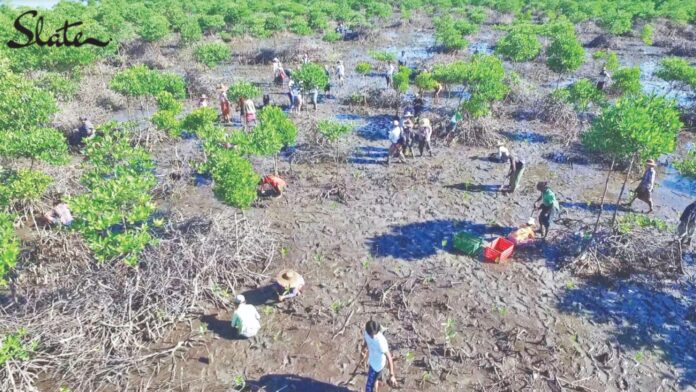By Dr Bremley W. B. Lyngdoh
Each year on December 4, Wildlife Conservation Day seeks to spread awareness about preserving and protecting the natural world and its inhabitants. The observance strives to put an end to wildlife crime while supporting the Endangered Species Act.
Wildlife crime includes illegal poaching and smuggling of animals. Every year, innumerable wildlife species are being slaughtered to fulfill human greed and traded illegally after being kept in unhealthy conditions. Animal products like ivory, skin, horns, nails, and others items, fetch enormous profit in the black market.
Wildlife crime is detrimental to the ecosystem as it causes animals to become endangered or extinct. Due to poaching, animals such as elephants, rhinos, tigers, sea turtles, lemurs, and gorillas are at risk of becoming extinct. For this reason, Wildlife Conservation Day focuses on putting an end to such crimes.
The day came into force due to the sincere efforts of the then U.S. Secretary of State, Hillary Clinton, on November 8, 2012 at The Wildlife Trafficking and Conservation event. The main organisations behind the establishment of this day are the U.S. State Department and the World Wildlife Fund (WWF).
In regards to conservation, our large-scale mangrove restoration project in the Delta Region of Myanmar, which was started in 2012, has directly impacted six of the UN Sustainable Development Goals (SDGs). The importance of restoring and protecting mangroves is reflected most clearly in SDG 14, which focuses on sustainably governing our oceans and coasts and recognises the immense value of mangroves to local communities. Restoring mangrove forests also supports other SDGs, including eliminating poverty and hunger, ensuring livelihood and economic growth, taking actions against climate change impacts and halting biodiversity loss.
In a partnership between Worldview International Foundation, Starboard, EcoFriend World, Worldview Impact Foundation and other like-minded companies, we have planted over 30 million mangrove trees at Thor Heyerdahl Climate Park in Myanmar that will draw 30 million tons of CO2 from the atmosphere. Wild elephants have found a safe new home among the young mangrove trees. The Delta Region is one of the last regions in Myanmar where those endangered species still roam wild. Our goal is to plant one billion trees by 2030 and scale up from Asia, to impact other mangrove harboring countries in Africa and South America.
The Eric Bremley Lyngdoh Earth Tiger Climate Park was launched by Worldview Impact Foundation UK in partnership with Earthbanc Sweden to mark World Oceans Day on June 8, 2021. It will help restore 10 million mangrove trees in the Sundarbans in West Bengal to fight climate change. The initiative aims to create sustainable livelihoods for the small and marginal farmers while protecting the habitat of the endangered Royal Bengal Tiger. This park has been created to honour Late Eric Bremley Lyngdoh from Meghalaya who inspired the ecosystem restoration projects of Worldview Impact Foundation and the creation of Spring Valley Farm in Shillong.
With one million animal and plant species on the brink of extinction, the need to restore and sustain biodiversity has never been greater. The COVID 19 pandemic has proven just how fragile we are as a species as even a single element can disrupt the balance.
The Sundarbans are the largest mangrove forests on Earth and are shared between India and Bangladesh. They play a vital role in shielding coastal communities from storms and floods intensified by climate change, like the super cyclone Amphan in May 2020 and cyclone Yaas in May 2021.
There are several reasons why we have chosen to restore mangrove ecosystems in India. Mangroves sequester carbon at fivefold the rate of terrestrial trees, they support rich biodiversity and protect coastlines and coastal communities from extreme weather events.
Mangrove restoration is an excellent regenerative investment with far-reaching environmental and social benefits, besides contributing to the SDGs. Oceans store the largest amount of carbon in the world; the shorelines via mangroves, seagrasses and coral reefs, make up a significant proportion of that important storage function. After mangroves are restored, the surrounding seagrasses recover, and these two climate action superheroes combine forces to sequester what is known as ‘Blue Carbon’ (carbon stored in the oceans and coastal ecosystems). Collectively, we are restoring marine systems around the world including coral reefs, sea grass and mangroves for blue carbon sequestration.
Restoring 20-50 billion mangroves could provide us with about 15 extra years to draw down our emissions and reduce our ecological footprint in order to mitigate climate change. It’s a lot of mangroves, for sure, yet the Worldview Impact Foundation team demonstrated that drone tree-planting could achieve 100,000 trees per day in Myanmar. It’s a message of great hope to know that we could buy ourselves that amount of time to address our most pressing climate-related issues.
We know that the Amazon Rainforests are reaching their tipping point, and as much as 40 percent could become savannah. It is crucial to protect forests that would otherwise be destroyed and become a source of emission instead of vital carbon sinks.
The partnership between Earthbanc and Bosque Amazonicos SAC (BAM) is supporting the livelihoods of 300 small concessional landowners through alternative economic models in the Peru Amazon Rainforest. This carbon project was initiated by BAM in partnership with the Federation of Brazil nut producers of Madre de Dios (FEPROCAMD) to conserve local ecosystems and secure economic opportunities for the local communities.
The sad truth is that nature and wildlife continue to suffer in order to satiate increasing human demands. Yet, people are still blind to the far-reaching consequences. To quote Hilary Clinton, “Wildlife cannot be manufactured. And once it’s gone, it cannot be replenished. Those who profit from it illegally are not just undermining our borders and our economies; they are truly stealing from the next generation.”


